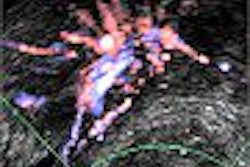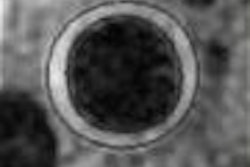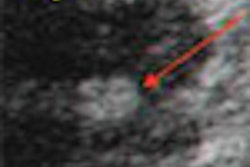(Radiology Review) Contrast-enhanced ultrasound (CEUS) can effectively evaluate blunt hepatic trauma, and has superior sensitivity compared to sonography without contrast enhancement, according to Italian radiologists. Dr. Orlando Catalano and colleagues at Istituto G. Pascale in Naples recommended that CEUS be used as the initial imaging modality when screening patients after blunt abdominal trauma.
Published in the Journal of Ultrasound in Medicine, their research also determined that CEUS should be used to check patient progress in trauma patients being conservatively managed.
During a three-year period, a total of 431 patients had ultrasound imaging following blunt abdominal trauma, and 87 of these required further evaluations with contrast-enhanced sonography and CT. "Indications for further assessment were baseline sonographic findings positive for liver injury, baseline sonographic findings positive for injury to other abdominal parenchyma, baseline sonographic findings positive for free fluid only, baseline sonographic findings indeterminate, and baseline sonographic findings negative with persistent clinical or laboratory suspicion," they stated.
The imaging criteria compared were injury conspicuity and size, completeness of injury extension, and involvement of the liver capsule.
SonoVue (Bracco, Milan, Italy), a second-generation contrast agent consisting of perfluorochemical microbubbles stabilized by a phospholipidic membrane, was administered through the antecubital vein using a 20-gauge catheter with a three-way stopcock. A dose of 4.8 mL or 2.4 mL was given as a single quick bolus followed by 5-10 mL of normal saline. Low mechanical-index power levels were selected, and harmonic imaging and a contrast-specific technology also were used to improve image quality and bubble visibility.
CT showed 23 hepatic lesions in 21 patients, and 19 of these patients had peritoneal or retroperitoneal fluid shown on all three modalities. Ultrasound imaging demonstrated liver injury in 15 patients, and CEUS showed injury in 19 patients. CEUS did not improve image quality (penetration) in large, technically difficult patients in whom the posterior liver was not visible, they stated.
"Our data show that (CEUS) is a promising tool in the initial assessment and follow-up of blunt liver trauma. It allows more accurate assessment of liver lesions in comparison with baseline sonography. It is also more accurate and informative than conventional sonography, and correlates better with CT findings," the researchers concluded. Using CEUS would also result reduced examination cost, radiation exposure, and use of ionic contrast media, according to Dr. Catalano.
"Blunt Hepatic Trauma: Evaluation With Contrast-Enhanced Sonography: Sonographic Findings and Clinical Application"
Catalano, Orlando; et al
Department of Radiology, Istituto G. Pascale, Via F. Crispi 92, I-80121 Naples, Italy
J Ultrasound Med 2005 (March); 24: 299-310
By Radiology Review
March 21, 2005
Copyright © 2005 AuntMinnie.com



















